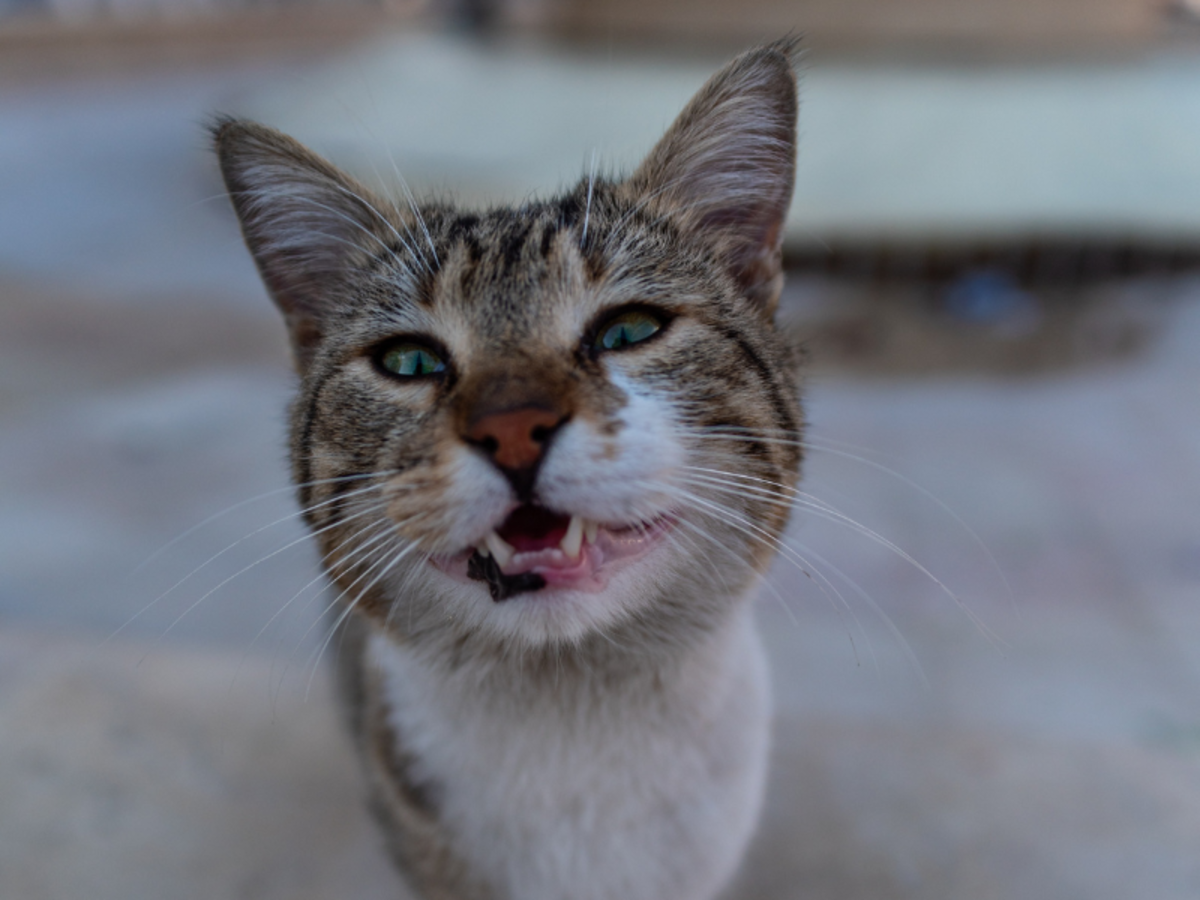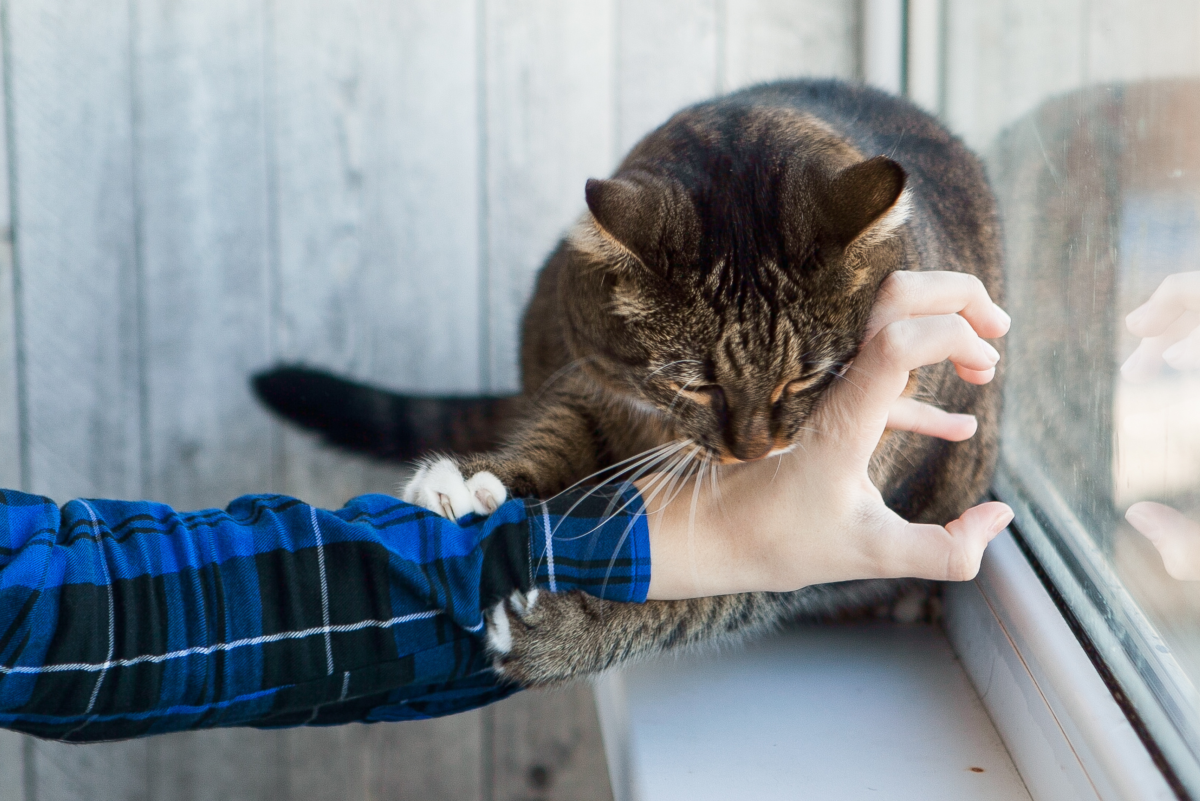Why Do Cats Need Whiskers
While most mammals have whiskers, cat whiskers are unusually long and sensitive, compared to the rest of the animal kingdom. Cats have prominent whiskers above their eyes, on the sides of their mouths, sides of their heads, under their chins and on the back of their front legs, at the wrist. So what are cat whiskers for? Why are they are so long and super sensitive?
You are likely to be surprised to learn the fantastic answer to the question, what cat whiskers are for! Each set of whiskers has its own purpose. And the sum of these sets of whiskers is used, in concert, in the ultimate flight-guidance system for jumping and attacking prey.
Why Do Cats Need Whiskers Above Their Eyes?
Cat Eyebrows Serve Three Purposes
First and foremost when these eyebrow feelers get touched or brushed, the eyes snap shut. It is an automatic reflex. This response protects their eyes from damage. Those giant eyes are another marvel of the domestic cats, allowing them to see in the dark. As we will discover, cats whiskers do a lot more to protect those big beautiful eyes for their survival.
Cat Whiskers Are Used to Evaluate Small Spaces
Additionally, cat eyebrows and the whiskers beside their face and mouth tell the cat if the rest of his body will fit into a small hideout, without getting stuck. You may have seen a cat contemplating entering a pipe or hole in the ground, only to begin to poke his head in and quickly withdraw it.
His whiskers told him the rest of his body is likely to get wedged in that space. How does this work? Cats whiskers grow in length, relative to their girth. Young, healthy fat-cats have a full complement of extra long whiskers. The eyebrows let them know how tall the space is relative to his height, in order to be able to effectively crawl in that space. The side whiskers on the face and upper lip indicate whether his girth will fit on not.
Domestic Feline Whiskers Sense Airflow
Finally, and most importantly, cats use their whiskers to sense airflow around an object. This not only helps them to “see in the dark,” but also to pounce on their prey with deadly accuracy. In this instance, cats are using their full compliment of whiskers to sense and determine the size and location of their prey. After all, cats do the majority of their hunting under cover of the night.
What Are Cats Whiskers For: The Ultimate Flight Guidance System
If you have an opportunity to watch a cat hunting, you will see them inching up on their prey, one interminable step at a time. Their patience in hunting is renown. Once kitty feels he is within striking distance, he begins moving back and forth and sideways in small increments.
This edging back and forth and side to side is the cat sensing with its whiskers, the location of his prey. Each micro shift, helps the cat triangulate the rodent’s size and location. The air flows around the mouse, and onto the cat’s facial whiskers. Once kitty has the coordinates down, he is free to leap for the kill.
The ideal landing spot puts the cat’s mouth at the nape of the rodent’s neck. The death shot, at the base of the skull, keeps the prey from damaging the cat with its teeth, and prevents the rodent’s paws from reaching the cat’s eyes. In fact, in the last micro seconds of descent, the cat closes his eyes to prevent any damage to them, should the pounce miss its mark.
Additionally, while in flight the whiskers send information on kitty’s flight path. Cats make midair adjustments, according to their whiskers senses, in order to land straight on all four feet. In fact, in all jumping or falling, the whiskers tell the cat which way is up or down. This is one way cats always land on their feet.
To get a better idea of how whiskers can guide a cat’s pounce, read about Kyra the cat born blind, and her ability to divine and attack her nemesis kitty housemate, with regular accuracy.

Can You Cut Cat Whiskers
You can physically cut cat whiskers, as they have no nerve endings in the actual hair follicle. Cutting a cat’s whiskers does not hurt them. However, it is a terrible idea to trim them. Cutting cat whiskers impairs their ability to jump and land safely. Loss of whiskers is the equivalent of having an inner ear imbalance. It throws off their equilibrium and spatial awareness.
Can Cats Regrow Whiskers
Young, healthy cats shed and regrow individual whiskers regularly. Broken or singed cat whiskers will be replaced in time. However, older cats may not replace their whiskers with regularity, and as they age, whiskers frequently don’t grow as long as they once did.
Nutrients to Regrow Cat Whiskers
If whiskers and coats are looking sparse or unhealthy, you can try adding a little scrambled or hard boiled eggs to your cat’s diet. The biotin in eggs supports coat health. Foods high in omega 3 and omega 6 fatty acids, such as salmon, will also support healthy coat and whisker growth.
Why You Should Not Touch A Cat’s Whiskers: Whisker Fatigue
Playing with cat whiskers is irritating to them, much the same way tickling is uncomfortable for people. These highly sensitive hair follicles trigger a fight-or-flight sensation when they are overly stimulated.
This stress response is why cats prefer to eat and drink from wide lipped bowls or dripping water faucets. Imbibing from a bowl where their whiskers touch the sides makes them anxious, and ultimately they will refuse to eat from that container. Whisker fatigue is the result of sensory fatigue.
What Condition Does Missing Cat Whiskers Indicate
Healthy Cat Whiskers vs Unhealthy
Healthy cat whiskers will grow to the length of the width of the cat. The longest whiskers are around the mouth, with the longest of those being the ones placed furthest from the mouth. Broken whiskers or singed whiskers can occur from trauma, and should regrow. The whiskers are spaced evenly apart in 4-5 rows, so it is easy to see if there are missing whiskers, that are failing to regrow.
Healthy cats can also lose whiskers due to skin infections, mange mites and ringworm. If the skin around the missing hair is red, flaky or crusty, it’s time to visit the vet. They can take a scraping and determine what is causing the hair loss and prescribe a non-toxic to cats cream, to clear up the condition.
Older cats may need supplementation to help an unhealthy looking complement of whiskers to initiate growth and grow whiskers back to proper length. See the supplements mentioned above, as well as scrambled eggs, rich in biotin.




